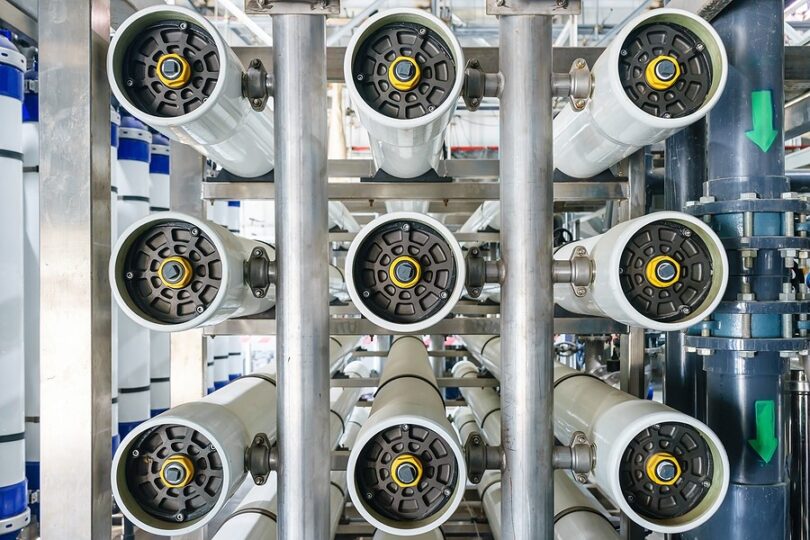Water scarcity is one of the biggest issues facing the world in the 21st century, with four billion people – or some two-thirds of the global population – experiencing severe issues in this regard for at least one month out of every year.
Unicef figures show that there are now two billion people who live in countries with an inadequate water supply, while half the world’s population could be living in regions affected by water scarcity as early as the year 2025. Furthermore, it’s predicted that 700 million people could find themselves displaced by intense water scarcity as early as 2030.
Water scarcity occurs when there are insufficient supplies to meet demand, driven by population growth, agriculture, pollution, urbanisation, water mismanagement, climate change and more frequent and more extreme weather events.
The problem is a complex one and no two regions face the exact same difficulties, so there is no one-size-fits-all approach to solving the issue. Different countries will need to find and implement their own specific strategies in order to shore up supplies and safeguard them for future generations.
One potential solution is, of course, desalination, where salts and other minerals are removed from water to make it suitable for drinking, irrigation or industrial usage.
Brackish water resources will likely become increasingly important as time goes on and climate change puts evermore pressure on more traditional water supplies like aquifers, rivers, lakes and streams and desalination is certainly one potential way in which water can be treated.
Most desalination methods involve reverse osmosis processes, where seawater is forced through a membrane, with salt trapped on one side and purified water filtered through to the other. However, this may not necessarily be the best way of working, because the process is a very energy-intensive one, while material costs are expensive.
However, a team of researchers at the Australian National University (ANU) have been developing the world’s first thermal desalination method to help tackle these issues, where plants aren’t powered by electricity but instead by moderate heat directly generated from the sun, or by waste heat from industrial processes or machines like air conditioners.
According to Voice Over America News, the study – published in the Nature Communications journal – investigated the benefits of thermo diffusion, where salt moves from hot temperatures to cold, with seawater pumped through a narrow channel below a unit heated above 60 degrees C and above a bottom plate cooled to 20 degrees C.
After water has been cycled through these channels repeatedly, seawater salinity can be reduced from 30,000 parts per million to less than 500 parts per million.
The team is now building a multichannel solar-powered device in the Pacific kingdom of Tonga to desalinate seawater and help the country deal with a severe drought.
Lead author of the study Juan Felipe Torres – mechanical and aerospace engineer at the university – said: “We use a phenomenon people have not used before. We are exploring its applicability in this context but in essence [it] should be something super simple, something as simple as a channel where you have water flowing through it and you are going to produce some sort of separation – and this is what thermal desalination is doing.”
What are the limitations with desalination?
While desalination will, no doubt, form part of an overall strategy for addressing the issues of water stress and scarcity as it can very successfully remove salt from saltwater and convert it into fresh, but it’s important to note that there are some drawbacks to this particular option.
Aside from being very energy intensive and expensive to run these plants, they also produce toxic chemicals and waste that can be very harmful to the natural environment and local biodiversity.
A recent study published in the Science of the Total Environment journal – featured by the World Economic Forum – found that in order to produce around 95 million cubic metres of freshwater, 141.5 million cubic metres of brine was produced as a result.
This waste product contains toxins such as copper and chlorine, as well as elevated amounts of salt compared to typical saltwater. In order to get rid of it, desalination plants dump it into natural waterways, causing harm to sea life by lowering the amount of oxygen in the water, putting marine life at risk.
While there are many countries that make heavy use of desalination for water supplies – Saudi Arabia, for example – it seems that there may well be better, more effective solutions that don’t cause further harm to the environment.
Water recycling, rainwater harvesting, water leak detection and repair, grey water use and water conservation can all help make significant inroads where water consumption is concerned, without taking their toll on the planet.
If, as a business, you’d like to find out more about how you can go about reducing your own water footprint to help ensure that supply can meet demand in the future, get in touch with the Switch Water Supplier team today.







